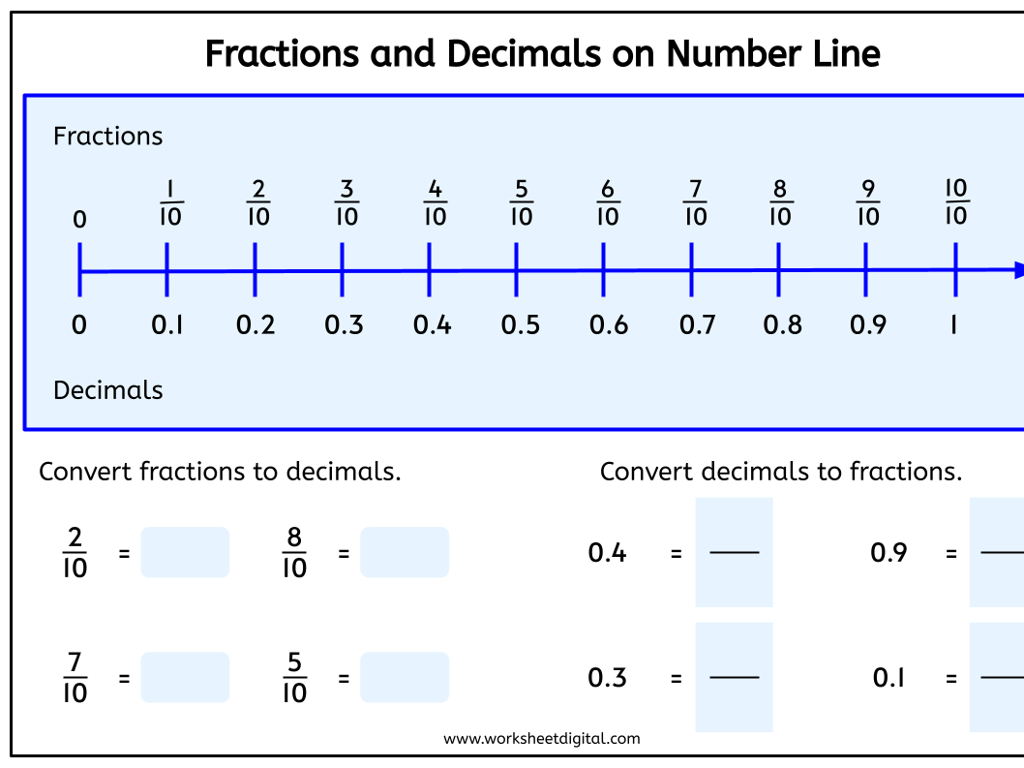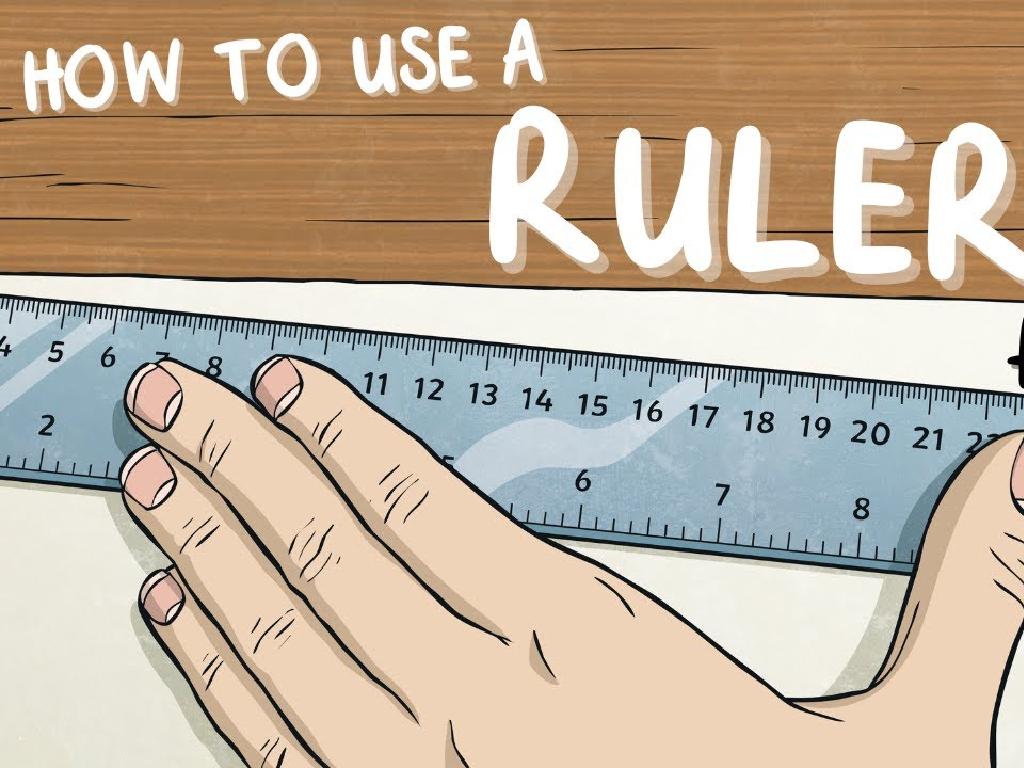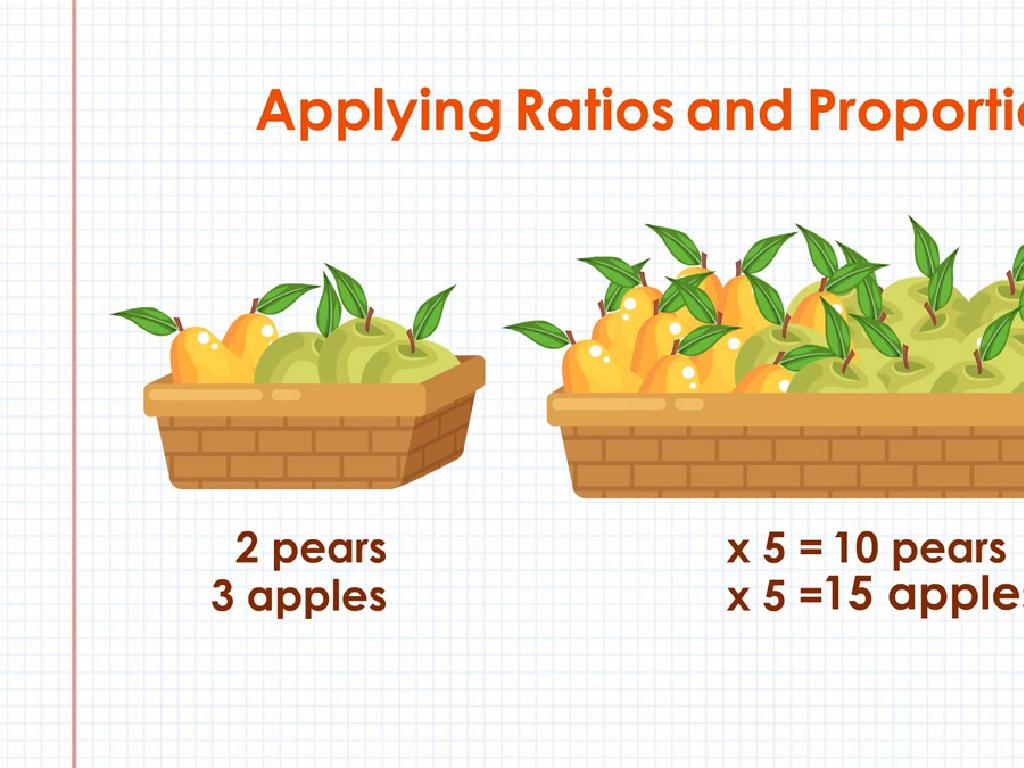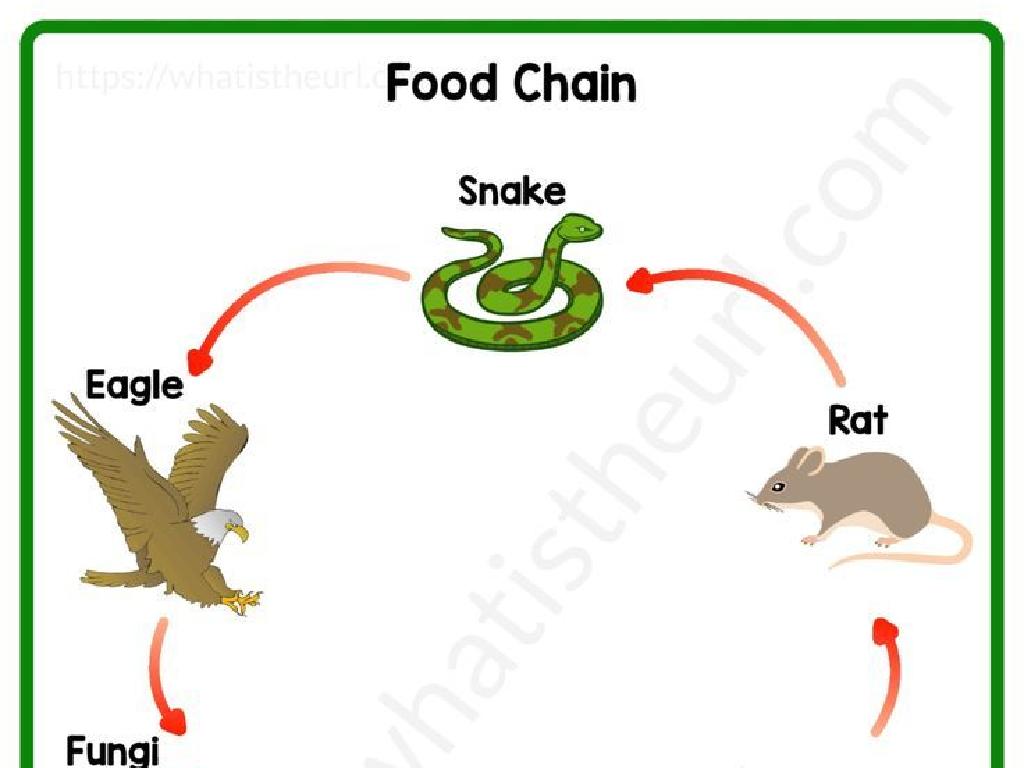Divide Multi-Digit Numbers By 1-Digit Numbers
Subject: Math
Grade: Fifth grade
Topic: Division
Please LOG IN to download the presentation. Access is available to registered users only.
View More Content
Welcome to Division: Mastering Multi-Digit Division
– What is division?
– Division is splitting into equal parts or groups.
– Division’s role in math
– It’s essential for sharing, organizing, and scientific calculations.
– Today’s objective: divide multi-digit numbers
– We’ll learn to divide numbers like 452 by 3.
– Practice problems
– Solve examples together and try some on your own.
|
This slide introduces the concept of division as a method of sharing equally among a number of parts. Emphasize why division is a fundamental skill in mathematics, necessary for various real-life applications such as sharing items equally, organizing objects, and even in scientific calculations. The goal for today’s lesson is to enable students to divide multi-digit numbers by 1-digit numbers confidently. Provide a step-by-step guide on the division process, and solve a few examples as a class. Assign practice problems for students to work on independently, ensuring they grasp the concept. Encourage questions and peer discussion to facilitate learning.
Understanding Division
– Division creates equal groups
– If you have 15 apples and make 3 equal groups, each group has 5 apples.
– Division is inverse of multiplication
– If 3 x 5 = 15, then 15 ÷ 3 = 5.
– Real-world division applications
– Dividing pizza slices among friends or money into equal savings.
– Practice with examples
|
This slide introduces the concept of division to fifth graders by explaining it as a method of creating equal groups and as the opposite operation of multiplication. Start by discussing how division is used to distribute items evenly into groups, which they may have encountered in real-life situations like sharing snacks. Then, connect division to multiplication by showing how one operation can undo the other. Provide relatable examples, such as dividing slices of pizza among a group of friends or money into equal amounts for savings. Encourage students to think of their own examples and conclude with practice problems to solidify their understanding.
Division Vocabulary
– Dividend: Number to divide
– If you have 15 apples and want to divide them into groups, 15 is the dividend.
– Divisor: Number that divides
– If you divide the apples into groups of 3, the number 3 is the divisor.
– Quotient: Division result
– After dividing, the number of apples in each group is the quotient.
– Remainder: Leftover after division
– If any apples can’t be evenly divided, those are the remainder.
|
This slide introduces the basic vocabulary of division, which is essential for understanding the process of dividing multi-digit numbers by 1-digit numbers. The dividend is the total amount you’re working with, while the divisor is the number you’re dividing by. The quotient is the answer you get after division, and the remainder is what doesn’t fit evenly into the division. Use examples like dividing objects into groups to make these concepts relatable. Encourage students to think of their own examples and to visualize the division process to better grasp these terms.
Dividing Multi-Digit Numbers by 1-Digit Numbers
– Start with the first dividend digit
– If the dividend is 452 and divisor is 3, start with 4 ÷ 3.
– Multiply divisor by the first quotient
– 3 x 1 (since 4 ÷ 3 = 1) gives us 3.
– Subtract product from the dividend
– Subtract the 3 from 4, which leaves us with 1.
– Bring down the next digit, repeat
– Drop down the next digit to make 15, then divide by 3 again.
|
This slide outlines the step-by-step process for dividing multi-digit numbers by 1-digit numbers. Begin by dividing the first digit of the dividend by the divisor and find the initial quotient. Multiply this quotient by the divisor to find the product, and subtract this product from the dividend to find the remainder. Then, bring down the next digit of the dividend and repeat the process until all digits have been used. It’s crucial to ensure students understand each step before moving on to the next. Use examples like 452 ÷ 3 to illustrate the process, and encourage students to practice with different numbers to gain confidence.
Dividing Multi-Digit Numbers by Single Digits
– Example: 452 ÷ 3
– Step-by-step division
– Divide each digit starting from the left
– Understanding remainders
– Remainders are what’s left over after division
– Interpreting the results
– Discuss what remainders tell us in division
|
This slide introduces students to the concept of dividing multi-digit numbers by single-digit numbers using a clear example. Start by writing 452 divided by 3 on the board. Walk the class through each step of the division process, ensuring to divide each digit of the multi-digit number starting from the left. As you work through the problem, explain how to handle remainders. After completing the division, discuss with the class what the remainder represents and how it can be interpreted in different contexts, such as when dealing with whole items that cannot be split. Encourage students to ask questions and provide additional examples if needed to ensure understanding.
Division Practice: Multi-digit by 1-digit
– Solve: 567 ÷ 4
– Solve: 1296 ÷ 6
– Discuss solutions with a partner
– Compare answers and methods
– Share different methods used
– Did you use long division or another strategy?
|
This slide is aimed at providing students with practice problems to apply their division skills, specifically dividing multi-digit numbers by 1-digit numbers. Encourage students to use long division and check their work by multiplying the quotient by the divisor to see if they get the original dividend. After solving the problems individually, students should pair up to discuss their solutions and the strategies they used. This peer interaction will help them learn from each other and understand different approaches to the same problem. As a teacher, facilitate the discussion by asking students to explain their methods and reasoning. This will also help you identify any common misconceptions or difficulties students may have.
Common Mistakes in Division
– Don’t forget to bring down digits
– After dividing, bring down the next digit to continue.
– Keep the steps in correct order
– Remember: Divide, Multiply, Subtract, Bring down (DMSB).
– Place quotient digits accurately
– Quotient digits go right above their respective divisors.
– Review your work for errors
|
This slide aims to highlight frequent errors students make while dividing multi-digit numbers by 1-digit numbers. Emphasize the importance of the ‘bring down’ step, which is often overlooked after subtracting. Stress the sequence of division steps using the acronym DMSB to help them remember. Ensure students understand where to place quotient digits by aligning them with the correct place value of the divisor. Encourage students to double-check their work by multiplying the divisor by the quotient to see if it equals the dividend minus the remainder. Provide practice problems where students can apply these tips and correct any mistakes they encounter.
Class Activity: Division Relay
– Form groups of four students
– Solve division problems step-by-step
– Each student tackles one part of the division process
– Compete to finish first for points
– Focus on teamwork and division mastery
|
This activity is designed to encourage collaboration and reinforce the concept of division. Divide the class into small groups and assign each student a specific step in the division process. For example, one student might be responsible for determining the multiples of the divisor, another for subtracting, and so on. This relay-style activity will not only make division fun but also ensure that each student understands each part of the process. Possible variations of the activity could include using different numbers, incorporating word problems, or having students create their own division problems for the group to solve. The goal is to create a dynamic learning environment where students can practice and celebrate their math skills together.
Homework: Mastering Division
– Complete the division worksheet
– Practice multi-digit by 1-digit division
– For example, divide 452 by 3
– Note down any questions
– Write questions about steps you find tricky
– Get ready to discuss in class
|
This homework assignment is designed to reinforce the concept of dividing multi-digit numbers by 1-digit numbers. The worksheet provided should contain a variety of problems that require students to apply the division algorithm. Encourage students to practice regularly to build fluency in this skill. Remind them to write down any questions or difficulties they encounter while completing the worksheet. These questions will be addressed in the next class to ensure that all students have a solid understanding of the division process. Possible activities for the next class could include peer tutoring, group problem-solving, or a Q&A session to address specific issues students may have encountered.
Division Mastery: Recap and Support
– Review division steps
– Recall: Divide, Multiply, Subtract, Bring down
– Emphasize practice value
– Practice makes perfect: more problems, better skills
– Teamwork in homework
– Pair up to solve tricky problems together
– Celebrate learning progress
|
As we conclude, it’s crucial to revisit the steps for dividing multi-digit numbers by 1-digit numbers. Remind students of the division process: divide, multiply, subtract, and bring down the next digit. Emphasize the importance of regular practice to enhance their division skills. Encourage students to work in pairs or groups when doing homework to help each other understand difficult problems. Celebrate their hard work and progress in learning division, fostering a positive attitude towards math. Provide additional practice worksheets and suggest forming study groups for continued support.






